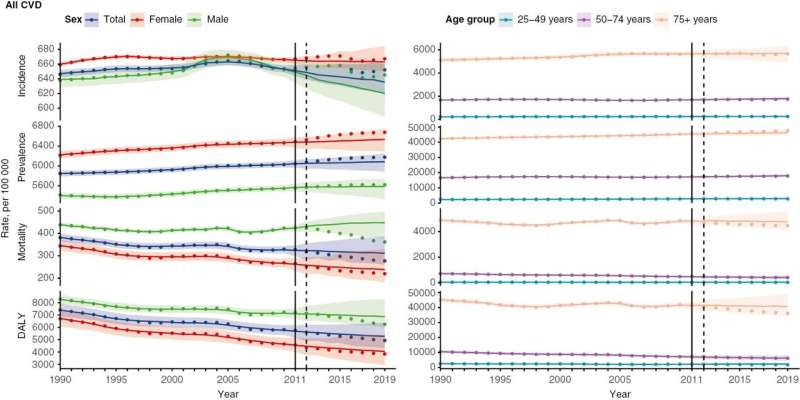A new study published in Cardiovascular Innovations and Applications has investigated the effects of the 2011 Chinese Society of Cardiology guidelines (2011 CSC guidelines) on the overall and subtype specific cardiovascular disease (CVD) burden in China.
A Bayesian causal impact analysis was conducted to investigate changes in the burden of CVD overall and 13 subcategories, before and after release of the 2011 CSC guidelines, by using publicly available data during 1990–2019.
The 2011 CSC guidelines were associated with moderate declines in CVD mortality (5.7%; equivalent to 161 per 100,000) and DALYs (2.9%; 1,429 per 100,000), but small increases in incidence and prevalence, with an approximately one-year lagged effect. Similar impact patterns were observed for ischemic stroke, cardiomyopathy and myocarditis, and aortic aneurysm.
Release of the 2011 CSC guidelines increased intracerebral hemorrhage incidence, but sharply decreased rheumatic, ischemic, and non-rheumatic valvular heart disease mortality and DALY rates. The burden of other CVD subcategories was unchanged. Health worker numbers, population size, disposable income, hospital admission rates, and crude death rates were critical contributors to CVD burden beyond the 2011 CSC guidelines.
The 2011 CSC guidelines decreased the burden of CVD and several subcategories. However, efforts to enhance health promotion and strengthen health care remain urgently needed in China.
More information:
Zhao Yang et al, Changes in Cardiovascular Disease Burden in China after Release of the 2011 Chinese Guidelines for Cardiovascular Disease Prevention: A Bayesian Causal Impact Analysis, Cardiovascular Innovations and Applications (2023). DOI: 10.15212/CVIA.2023.0069
Provided by
Compuscript Ltd
Citation:
Changes in cardiovascular disease burden in China after release of guidelines for prevention (2023, November 7)
retrieved 14 November 2023
from https://medicalxpress.com/news/2023-11-cardiovascular-disease-burden-china-guidelines.html
This document is subject to copyright. Apart from any fair dealing for the purpose of private study or research, no
part may be reproduced without the written permission. The content is provided for information purposes only.






